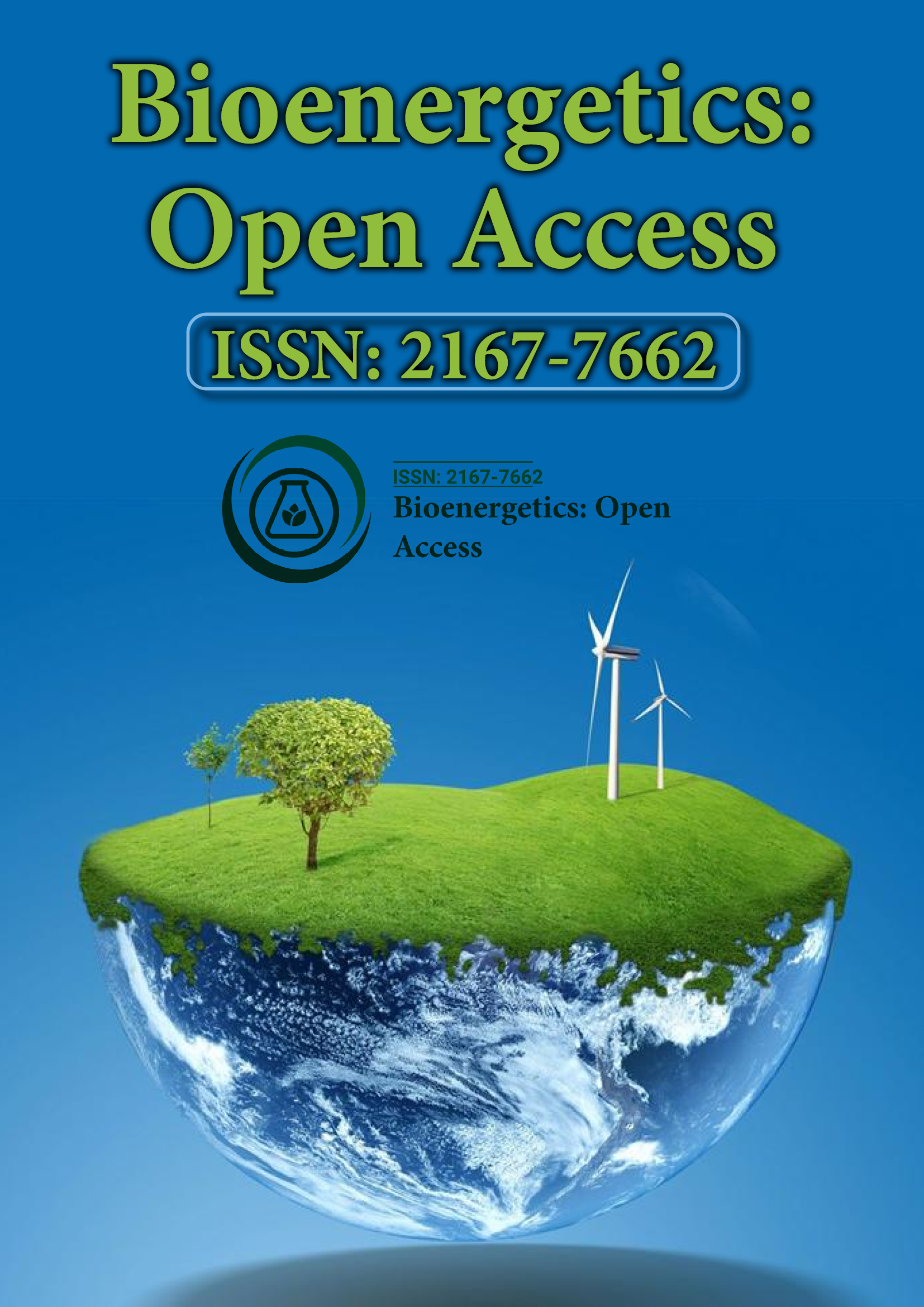Indexed In
- Open J Gate
- Genamics JournalSeek
- Academic Keys
- ResearchBible
- RefSeek
- Directory of Research Journal Indexing (DRJI)
- Hamdard University
- EBSCO A-Z
- OCLC- WorldCat
- Scholarsteer
- Publons
- Euro Pub
- Google Scholar
Useful Links
Share This Page
Journal Flyer

Open Access Journals
- Agri and Aquaculture
- Biochemistry
- Bioinformatics & Systems Biology
- Business & Management
- Chemistry
- Clinical Sciences
- Engineering
- Food & Nutrition
- General Science
- Genetics & Molecular Biology
- Immunology & Microbiology
- Medical Sciences
- Neuroscience & Psychology
- Nursing & Health Care
- Pharmaceutical Sciences
Opinion Article - (2025) Volume 13, Issue 1
Oxidative Stress and the Breakdown of Cellular Antioxidant Defenses
Carlos Mendez*Received: 19-Feb-2025, Manuscript No. BEG-25-28874 ; Editor assigned: 21-Feb-2025, Pre QC No. BEG-25-28874 (PQ); Reviewed: 07-Mar-2025, QC No. BEG-25-28874 ; Revised: 14-Mar-2025, Manuscript No. BEG-25-28874 (R); Published: 21-Mar-2025, DOI: 10.35248/2167-7662.25.13.291
Description
The increasing presence of Perfluorinated Compounds (PFCs) in aquatic ecosystems has raised significant concerns regarding their ecological toxicity, particularly to primary producers such as microalgae. Among these compounds, Perfluorobutanoic Acid (PFBA), a short-chain Perfluoroalkyl Substance (PFAS), has gained attention due to its environmental persistence and potential toxic effects, despite initially being considered less harmful than its long-chain counterparts. The recent focus on PFBA's impact on the freshwater microalga Chlorella vulgaris provides valuable insights into the molecular and physiological mechanisms of toxicity, revealing a complex interplay involving photosynthetic disruption, oxidative stress and impaired antioxidant responses. This commentary explains the broader implications of these findings and suggests directions for future research and environmental monitoring.
Chlorella vulgaris plays a critical role in aquatic food webs, serving as a primary producer and contributing significantly to oxygen production and nutrient cycling. Any perturbation in its physiological processes can cascade through aquatic ecosystems, affecting higher trophic levels. Recent experimental studies have shown that exposure to environmentally relevant concentrations of PFBA results in significant reductions in photosynthetic efficiency in C. vulgaris. Measurements of chlorophyll content and photosystem II activity reveal dose-dependent declines, suggesting that PFBA directly impairs the photosynthetic machinery. This inhibition likely results from PFBA-induced disruption of the thylakoid membrane structure or interference with electron transport chains, reducing the alga’s capacity to convert light energy into chemical energy.
Simultaneously, PFBA exposure induces substantial oxidative stress in C. vulgaris, as evidenced by elevated levels of Reactive Oxygen Species (ROS). These ROS not only damage cellular components, such as lipids, proteins and nucleic acids, but also signal the activation of stress response pathways. The overaccumulation of ROS suggests an imbalance between their production and the capacity of the cell’s antioxidant defense mechanisms. Key antioxidant enzymes, such as Superoxide Dismutase (SOD), Catalase (CAT) and peroxidases, exhibit altered activity in PFBA-treated cells. While initial exposure may upregulate some antioxidant responses as a compensatory mechanism, prolonged or high-concentration exposure appears to suppress their function, indicating systemic oxidative damage and impaired cellular detoxification capacity.
The impairment of antioxidant defense not only exacerbates oxidative stress but also contributes to the progressive loss of cell viability. This toxicity mechanism points toward PFBA’s potential to trigger programmed cell death or necrosis in C. vulgaris, depending on exposure dynamics. Furthermore, transcriptomic analyses have revealed the downregulation of genes related to photosynthesis, stress tolerance and cellular repair in PFBA-exposed cells, underscoring the multifaceted nature of PFBA’s impact. Notably, these responses are consistent with findings observed in other aquatic species, indicating possible conserved pathways of PFBA toxicity across taxa.
What is particularly concerning is that PFBA, previously regarded as a “safer” alternative to long-chain PFAS like PFOS and PFOA, may pose comparable risks at the cellular level, albeit through different or subtler mechanisms. Its high water solubility and resistance to degradation make PFBA prone to widespread distribution in aquatic environments, especially near wastewater discharge points or industrial sites. Unlike some longer-chain PFAS, PFBA does not bio-accumulate extensively in animal tissues, which initially suggested lower ecological risk. However, its chronic toxicity to foundational organisms like microalgae challenges this assumption and urges a re-evaluation of current risk assessment models that focus primarily on bioaccumulation and acute toxicity.
In conclusion, the evidence highlighting PFBA’s toxicity in Chlorella vulgaris through disrupted photosynthesis, heightened oxidative stress and compromised antioxidant defenses adds an important layer to our understanding of PFAS impacts in aquatic ecosystems. These findings suggest that even short-chain PFAS, previously considered low-risk, warrant closer scrutiny for their chronic and sub-lethal effects on primary producers. There is a pressing need for integrated eco-toxicological frameworks that account for mechanistic toxicity data and long-term ecosystem responses.
Citation: Mendez C (2025). Oxidative Stress and the Breakdown of Cellular Antioxidant Defenses. J Bio Energetics. 13:291.
Copyright: © 2025 Mendez C. This is an open access article distributed under the terms of the Creative Commons Attribution License, which permits unrestricted use, distribution, and reproduction in any medium, provided the original author and source are credited.
